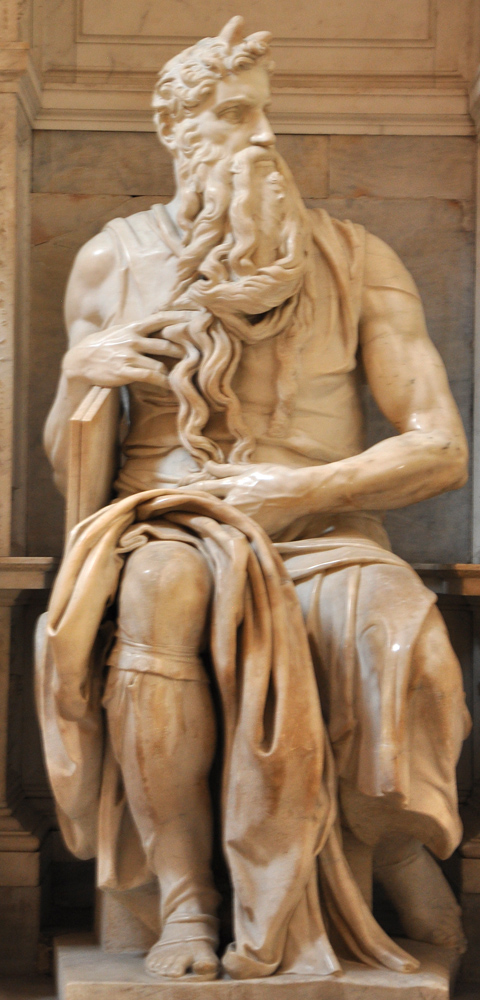
Michelangelo
Moses
1516
Marble
Church of St. Peter in Chains, Rome, Italy
The artist observes the medieval tradition of picturing Moses with a pair of horns, but they are considerably shorter and less horn-like than in two-dimensional images of the period. The reason could be simply practical, in that projecting elements are more susceptible to breakage. Or it could be aesthetic. According to a number of internet sites, Michelangelo wrote that good sculpture should avoid projections, and the 16th century did see a retreat from literal horns to something more credible, such as the fly-away hair in
this painting
of 1515-20 or the light rays in
this one from 1593.
 Some have claimed that the stern sidewise glance in the statue replicates Moses' reaction to the golden calf in the Sistine Chapel's series on Moses (right). Readers may judge for themselves.
Some have claimed that the stern sidewise glance in the statue replicates Moses' reaction to the golden calf in the Sistine Chapel's series on Moses (right). Readers may judge for themselves.
View this image in full resolution.
Read more about Moses.
Photographed at the church by Richard Stracke, shared under Attribution-NonCommercial-ShareAlike license.
 Some have claimed that the stern sidewise glance in the statue replicates Moses' reaction to the golden calf in the Sistine Chapel's series on Moses (right). Readers may judge for themselves.
Some have claimed that the stern sidewise glance in the statue replicates Moses' reaction to the golden calf in the Sistine Chapel's series on Moses (right). Readers may judge for themselves.
